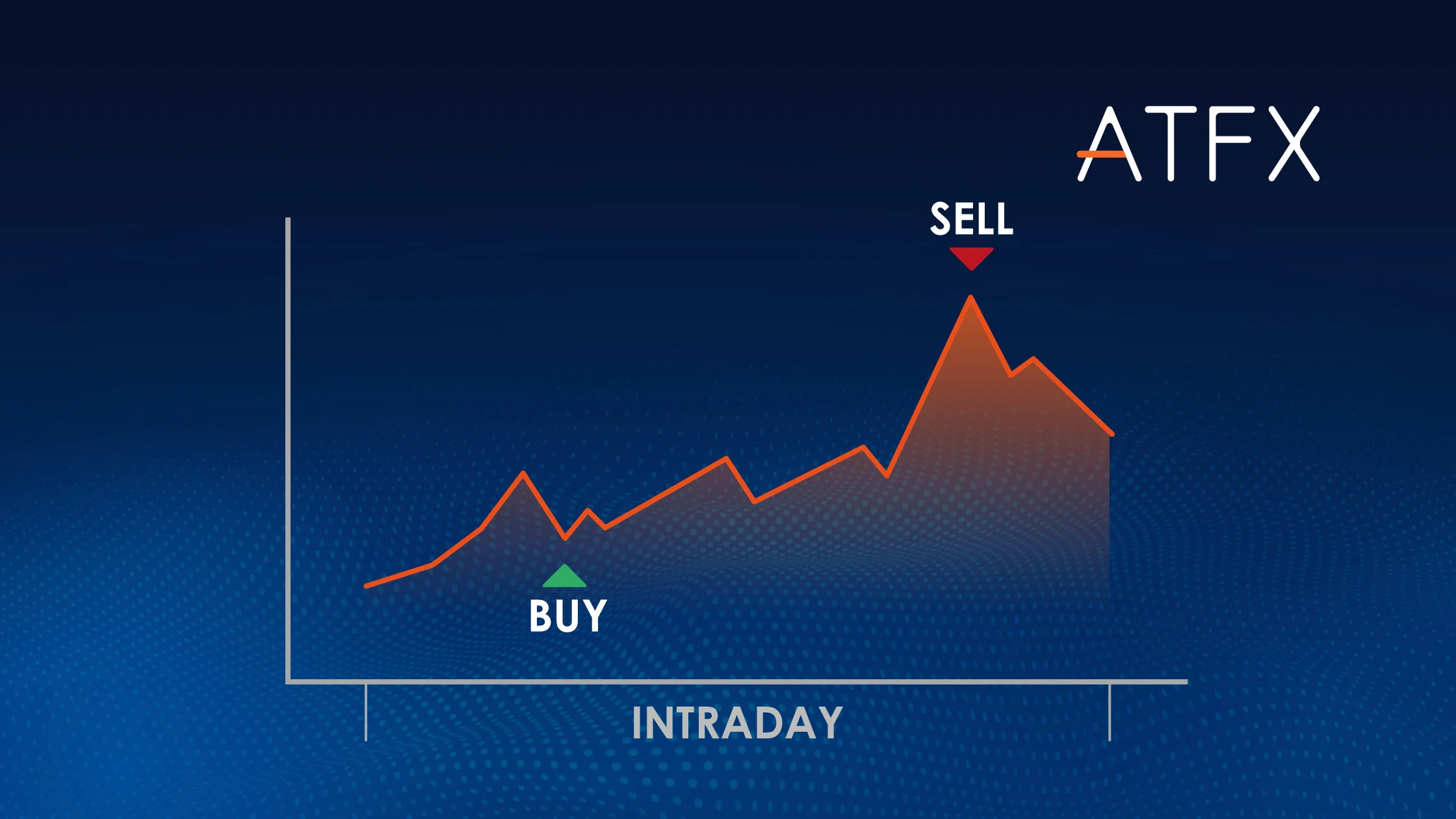In the forex trading world, it’s crucial to understand position trading to start your trading journey with a comprehensive knowledge. In this article, we will delve into the details of what position trading is and its pros and cons. Also, you can learn in this article when and why to add positions, explaining the top Position Trading Strategies, such as the pyramiding strategy, the Cooling Strategy, the grid strategy, scaling before confirmation, and the Martingale Strategy.
What is Position Trading?
Position trading is a long-term approach where traders hold positions for extended periods, typically ranging from days to weeks or even months. The goal is to capture major price movements by aligning trades with broader economic or fundamental trends.
When asking “What is position trading?” we mean that it is the opposite of scalping or day trading. Instead of reacting to short-term volatility, a position trader takes fewer, more deliberate trades based on a macro view of the market. This approach often relies on fundamental analysis, supported by technical confirmation. If you want to be a position trader, you need to know what the pros and cons of position trading are.
Pros and Cons of Position Trading:
Before applying a position trading strategy, it’s essential to weigh the benefits and trade-offs. As long as long-term trading can offer stability, it has challenges that traders face in their trading journey.
Pros:
- Controlling Overtrading, lowering costs: Fewer trades open mean lower transaction costs and less emotional pressure.
- Alignment with macro trends: A position trader typically follows broader trends that result from strong economic conditions.
- Less screen time: Positional trading does not require constant monitoring, offering more flexibility.
Cons:
- Requires patience and discipline: Trades may hold open for days or weeks to achieve their goals.
- Exposure to macro events: Holding open trades through weekends or data releases increases risk, causing a sudden trend reversal in the opposite direction.
- Exposure to insufficient capital: Unexpected market reversals or consolidations can test a trader’s confidence and capital.
Understanding these trade-offs helps traders assess if position trading suits their personality, strategy, and risk appetite. Traders who are interested in being fully aware of position trading tend to learn why and when to add a new position.
What is the time to add a new Position, and why?
Adding a new position is considered a tactical step aiming for efficient capital management, targeting the best entry price, and gradually engaging with the prevailing trend.
Why add new positions:
- Maximize profits: You can enhance the return on investment by adding positions as long as the ongoing momentum amplifies returns.
- Capitalise on current price action: Adding a position when market signals confirm a good opportunity, so the position sizes are scaled up.
- Efficient capital utilization: Gradually adding positions allows for scaling in and reduces risk while providing flexibility.
However, without solid risk management, adding positions can lead to overexposure to more risks, particularly if the market turns suddenly.
Before placing a trade, use a position size calculator to determine how many units to buy or sell based on your account size, risk tolerance, and stop-loss level. Also, it’s important to choose the trading strategy that is suitable for your personality and your risk tolerance. There are many trading strategies, and we will delve into the details of the most popular for position trading.
Top 5 Position Trading Strategies:
Let’s focus on the most popular position trading strategies, listed from the most widely used in different markets. The pyramiding strategy, the cooling strategy, and the grid trading strategy are the most famous among traders. The scaling before confirmation strategy and the martingale strategy are less popular, but not less important. They are briefly below:
- Pyramiding Strategy
- The Cooling Strategy
- The Grid Trading Strategy
- The Scaling Before Confirmation Strategy
- The Martingale Strategy
The Pyramiding Strategy: (Adding positions for the winning trades)
The core Meaning:
It’s a smart strategy used by position traders to boost a winning position by adding new positions and benefit from the ongoing market trend. It often happens after a temporary price correction or confirmed breakout.
How to use this strategy:
- Carefully analyze the market and mark a strong potential price movement.
- Open a position with a moderate size, suitable for the traded capital, and that can afford any potential risks.
- Make sure that the price goes in the anticipated direction, for example, it reaches a specific percentage of profit or a breakout.
- Adding smaller positions at pivot points parallel to the intended direction.
- Use the trailing stop loss feature to minimise risks and protect profits.
For instance, if you buy the USD/JPY pair at level 150.00, after the price breakout above this level, you can open a new position at level 150.50, using a trailing stop loss for 50 points. If the price goes up to 151.00, the trailing stop loss order will lock and allow gains to continue.
When is it effective?
The pyramiding strategy is effective during a strong momentum on the prevailing trend, enabling traders to multiply their profits without being more exposed to higher risks or significant losses.
The Cooling Strategy: (Adding positions for the losing trades)
The core Meaning:
Unlike the pyramiding strategy that relies on strengthening the winning trades, the cooling strategy traders follow averages down or (scale in) when the market moves against the original direction of the trade. This strategy relies on reducing the average entry price by adding new positions, anticipating that the price will rebound again.
How to use this strategy:
When the price moves against your anticipation after opening the first position, instead of closing it with a big loss, you can use the cooling strategy and open a new position in the same direction with a better entry price, just to support the first opened position, lowering its losses by gaining some profits when the price correction occur.
For instance, if you buy the USD/JPY pair at 155.00 and then the pair declines to 154.50, in this case, you can open a new long position at 154.50. If the price rebounds later to 155.20, the trader will gain profit by improving the average entry price.
The risks associated:
The risks increase in the case of the continuation of the opposite direction, which requires high levels of risk management skills and the use of stop-loss orders carefully. It’s preferred to use this strategy only amid the temporary pullbacks within a broader trend.
The Grid Trading Strategy: (Adding new positions regularly)
How does it work?
The grid trading strategy relies on adding long and short pending positions on fixed price distances above or below the current price, regardless of the market direction. These positions are activated based on price movements, establishing a grid of pending positions allowing the trader to benefit from the market’s fluctuations. Check our comprehensive guide on what grid trading is and how it works.
When to use the grid trading?
It’s preferred to be used in sideways markets, frequent ups and downs, or where there are continuing price fluctuations. At these times, you have the chance to maximize your profits without a specific trend.
How to apply the strategy?
- Create a grid of pending orders.
- Pending orders are activated by price movements when prices fluctuate up or down.
- Taking profits will be gradual in small amounts frequently.
For instance, the current price for the USD/JPY pair is 135.00. Long-pending orders are placed on 134.50 and 134.00. short-pending orders are placed on 135.00 and 136.00. When the price fluctuates up and down, these pending orders will be automatically activated, and some of them will be closed at a profit.
Its benefits and challenges:
The benefits:
- Chances to gain profits from bullish and bearish markets.
- You can use Grid trading EAs (Expert Advisors) to place orders automatically.
- Suitable strategy for risk diversification due to different entry and exit points.
The Challenges:
- Grid trading can lead to huge losses in one-trend markets while many pending orders are placed.
- Big capital is required, allowing you to open many positions at the same time.
- Huge losses can happen if the price movements exceed the grid order’s limit.
The Scaling Before the Confirmation: (Aggressive Entry Strategy)
Strategy Goal:
Scaling before the confirmation strategy aims to enter the market early with small positions before the trend’s clear confirmation. If the trend is confirmed later, you can benefit from it with lower risks due to the lower size of the position if you anticipate the direction wrongly.
When is the scaling-before-confirmation strategy used?
It’s used before the market trend is confirmed, where there are signals for early trend reversal without full confirmation, or trading near support and resistance levels with anticipation of pullbacks or incomplete technical patterns.
Worthynotes:
- Because of the pre-confirmation trend trading style, it requires a flexible personality with the ability to make informed decisions under pressure and quickly exit open positions.
- It’s suitable for experienced traders who have a solid knowledge of market trends and know when to exit positions.
- There is a high potential to close positions early due to the unexpected fluctuations and false breakouts.
The Martingale Strategy: (Aggressively doubling down on position sizes)
Simple Brief:
Matingale’s strategy relies on the concept of doubling down on position sizes after each loss to recall all previous losses in one winning position.
Why is it so risky?
It‘s so risky because it relies on multiplying the position size after each loss, assuming that the market will reverse back to the anticipated direction. This approach will increase risks and may lead to losing the whole capital quickly.
To whom is it suitable?
It’s suitable for well-experienced traders with a large investment capital, who have strict capital management. However, it should be used with utmost caution. This strategy might be attractive for risk-takers.
Trading Positions vs. Other Trading Styles:
After delving into the details of the position trading, let’s turn to a simple comparison between other trading styles and position trading, such as Day trading, scalping, and swing trading.
Position trading vs. Day trading:
Day trading refers to placing long and short positions within the day without holding open positions after the trading session ends. It’s different from position trading, where it remains open for days or weeks. Traders can place around 1 to 10 positions within the day, and each position lasts one hour or more. Day trading relies on short-term price movements, so it’s preferred to use technical analysis using the trading chart and technical indicators. You can check our comprehensive guide: What is day trading?
Position trading vs. Scalping:
This type of trading requires rapid entry and exit trades to profit from small price movements. A trader can place around 100 positions within the same day, because each position lasts just seconds to a few minutes.
Position trading vs. swing trading:
Swing trading relies on holding one trade open for a few days according to price movements to benefit from the price fluctuations in the market. A trader places around one to two trades a week, and each trade can last for some days or a week.
How does ATFX support its position traders?
The broker should provide traders with all the tools and educational materials to support their trading journey. Understanding the position trading strategies requires clear clarification of all the types included; you can choose a suitable one for your personality and tolerance. And that’s what ATFX provided to all traders; they are also providing trading platforms that fit different trading styles. Additionally, there are different comprehensive educational materials and webinars for all levels of traders, ranging from beginners to advanced traders.
Trading Platforms:
ATFX offers the best trading platforms, Metatrader 4 and Metatrader 5, equipped with all relevant tools and features to support traders and facilitate a seamless trading journey with rapid trade execution.
Educational Webinars & Seminars:
You can easily register to attend and benefit from the educational seminars and webinars provided by ATFX to learn more about position trading and how to trade professionally.





